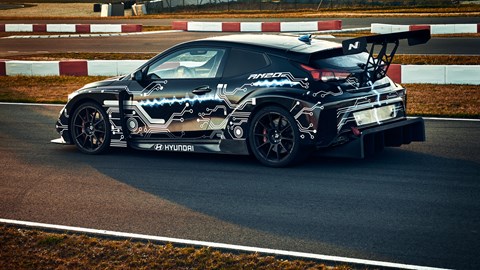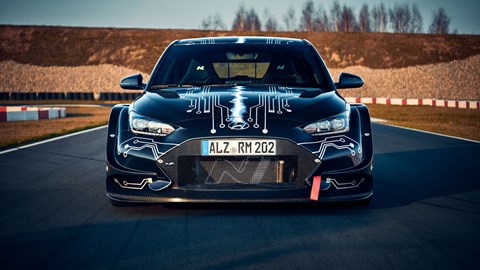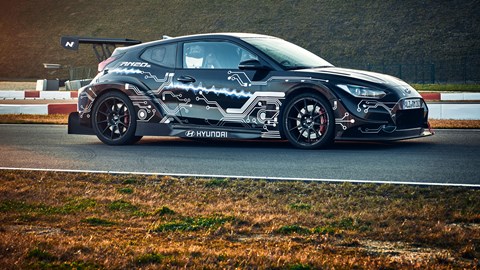► Racing-Midship electric
► 588bhp, mid-engined powertrain
► A tech showcase, for now
You’re looking at the RM20e, the Hyundai N division’s latest foray in the world of high-performance electrified vehicles. Shown at this year’s Beijing Automotive Exhibition, the new car puts out just under 600bhp – thanks to an electric powertrain in the middle of the car.
‘Our new electrified RM20e pushes the proven RM platform forcefully into a new, environmentally-focused decade of the 21st century, stretching the performance envelope of electrification on normal road environments,’ said Albert Biermann, president and head of R&D at Hyundai. ‘RM20e represents a revolutionary new chapter of electrified performance for the Racing Midship series, and our N engineers continue to garner valuable insights in the arena of zero-emission performance dynamics.’

RM20e
The RM20e looks a lot like a Veloster N with all the touring car trimmings, but Hyundai’s engineers have been busy creating an entirely different animal under the surface.
RM20e stands for Racing Midship, and that’s because the Hyundai places its electric powertrain in the middle of the car, and drives power to the rear wheels only. That should mean the RM20e gains the same handling characteristics as a mid-engineered car – only without the emissions.
Handling-aside, the RM20e uses a liquid-cooled 60kWh battery and 800V motor tech to generate 588bhp and 708lb ft torque. 62mph arrives from a standstill in less than three seconds, while 124mph takes 9.88 seconds.

What about Rimac?
Hyundai recently revealed a partnership with Rimac, Croatian purveyors of cutting-edge EV tech. It appears that this car was in development before that partnership took place, though because it’s a developmental platform, it’ll surely benefit from Rimac’s know-how in the future.

Why?
The RM20e could form the basis of the of an entry into the electric touring car championship (eTCR), but it also serves to remind us of Hyundai’s electric ambitions. Like every other manufacturer, Hyundai has big plans for electrified cars; it will deploy 44 environmentally friendly models by 2025.